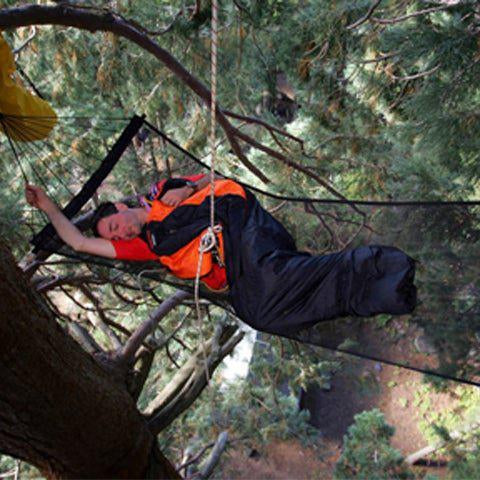NEW RYA EXCLUSIVE - Hammocks on Yachts
Origins
Dating back nearly 1000 years, hammocks were brought to Native Americans by Spanish Colonists who travelled across the North Atlantic Ocean. The ideal off-ground design of hammocks led to a dramatic growth in the demand with the Native Americans as it allowed them to sleep off the ground, making for a peaceful protected night sleep away from the harmful creatures that laid on the floor.
In 1597 the Royal Navy formally adopted the use of hammocks for Navel crew members to sleep in. It was the small compact design of the hammocks that appealed to the Navy, allowing for a utilization of the space in the lower deck meaning space for more crew. In addition to this, hammocks also solved a permanent problem that nearly every sailor experienced, sea sickness. How do hammocks prevent sea sickness? Sea sickness is caused due to the unstable movements of the boat in the ocean and against the waves. Hammocks act to solve this problem, with the swaying of a hammock opposing that of the ships, it provided a more ‘stable’ ‘level’ platform that could be slept in.
Materials
Whether from the Mayans, Taino people or native South Americans, the hammock has woven its way into other parts of the world. The materials used today are hugely different from what was used many years ago with society today favouring cotton and synthetic fabrics.Historically, traditional materials were used for hammocks like bark, sisal, and palm fronds. They were woven from a loom or done by hand, similar to how we make our hammocks here at Simply hammocks. Eventually new materials were used which solved problems associated with comfort, rain, and humidity.
In Venezuela, they began using breathable materials to prevent fungal infections due to rain and humidity. Eventually, they added nettings to provide protection from insects and a waterproof top sheet for the rain. India soon followed, manufacturing hammocks from Sari material. Due to the hot climate in this region, the light material of the Sari allowed for proper ventilation and cooling.
What hammocks would be the best suited on boats?
The obvious factor is that it needs to be water resistant, so that means no cotton hammocks as despite their high levels of comfort, they have minimal weather resistance. We think that our silk travellers’ hammocks would be ideal for boat use as they 100% Nylon material makes for a breathable, water retardant solution to a suitability problem.Another hammock that we think would be perfect for life on the seven seas is our Paradise Net hammock. Ideal for this venture, due to its polycotton blend, it has higher levels of weather resistance when compared to a pure cotton hammock. The Paradise Net Hammock really adds to the theme of sailing with its innovative weaving design, linking in with fishing nets and rigging on the classic old sailing vessels from the 1500s. The net design means no need for a towel after a swim to. Due to the criss-crossing of the material, holes reside within the laying surface which allows for opinion breathability, and with summertime heat, drying.
What’s the best place to hang a hammock on my boat?

Are you part of the RYA?
Here at Simply Hammocks, we’ve partnered with RYA to provide a fantastic 5% off our already heavily discounted items. That means, you get the basically half price! In addition to this, each item is accompanied by a Simply Hammocks warranty that lasts a whole 12-months.







